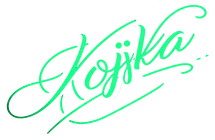Tame Your Book Outline

ACT 1 - STABLE WORLD:
Hook:
The first scene introduces essential aspects of the story and grabs readers with an intense need to know what happens next.
Setup:
This sequence of scenes in the Stable World establishes the characters, their wants, the stakes, the story theme, and the need for change.
Trigger:
Halfway through Act 1, a major event triggers the disruption of the protagonist’s Stable World, stopping the hero from continuing as before.
Wrangle:
In this sequence of scenes, the primary character wrangles with move-forward choices, but resists the need for change.
The Thrust Into 2:
In this scene, the lead character acts on the choices made in the Wrangler sequence, thrusting the individual into an Unstable World.
ACT 2A - UNSTABLE WORLD:
Response:
In this sequence of scenes, the chief protagonist responds to the Unstable World, and meets someone who will help them learn the internal theme.
Power Play 1:
This scene shows the power of the opposing force and establishes the core conflict.
Premise:
This sequence of scenes fulfills the novel’s premise, giving readers the events and emotions they crave.
Midpoint:
This scene shows the chief protagonist’s status (i.e., winning or losing), increases the stakes, and gives the sleuth insight, shifting the focus from the individual’s want to need.
ACT 2B - UNSTABLE WORLD (Continued):
Action:
In this sequence of scenes, the lead character takes action based on a discovery, changing the individual’s trajectory (i.e., up or down).
Power Play 2:
This scene hints at what is coming when the lead character PLUNGES INTO 3, emphasizing the ever-increasing stakes.
Battle 1:
In this sequence of scenes, the chief protagonist battles the opposing force, and appears to win (or lose) BATTLE 1.
ACT 3 - CHANGED WORLD:
Plunge Into 3:
In this scene, the victory at the end of Act 2B is reversed, plunging the lead character into an all-is-lost state (i.e., a looming sense of physical, professional, or psychological death). It’s the hero’s lowest point in the story. As per Blake Snyder, it’s like that moment when a caterpillar wraps itself in a cocoon.
Ponder:
In this sequence of scenes, the protagonist ponders prior choices, goal dedication, self worth, and personal abilities.
Face Off:
The scene includes a face-off between the opposing force and the lead character, brought on by that character’s prior choices.
Battle 2:
In this sequence of scenes, the primary point-of-view character and the opposing force fight intensely, knowing only one will survive the second battle. The protagonist must go through this fight just like a butterfly must struggle to emerge from the cocoon.
Climax:
This scene concludes with the chief character achieving positive or negative results tied to both the story’s goal and the protagonist’s need, resulting in either a win/win, win/lose, lose/win, or lose/lose.
Resolution:
The last scene ties up loose ends and satisfies readers with the emotions they expect from the Changed World.
This is one of the few outlines in my collection that I just simply don’t like. I find the beats rushed, and there should be more substance to an outline. What do you think? Leave me a comment below.



